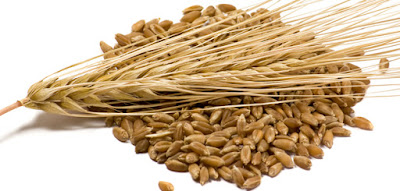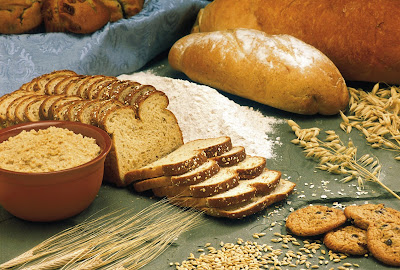Important Benefits Of Barley
Barley is a wonderfully versatile cereal grain with a rich nutlike flavor and an appealing chewy, pasta-like consistency. Its appearance resembles wheat berries, although it is slightly lighter in color.Whole grains are important sources of dietary fiber, vitamins, and minerals that are not found in refined or "enriched" grains.
Benefits Of Barley:
Preserves Skin Elasticity: Barley is a good source of Selenium, which helps you to preserve skin elasticity, thereby protecting it against free radical damage and loosening. Moreover, it also improves our heart, pancreas, and immune system functioning. A deficiency of selenium can lead to cancers of the skin, colon, prostate, liver, stomach, and breast.
Controls Blood Cholesterol Levels: Barley’s insoluble fiber yields propionic acid that helps keep the blood cholesterol levels low. It, being an excellent source of both soluble and insoluble fibers, is also specifically recommended by doctors for its naturally low-fat content and zero cholesterol properties.
Manages Diabetes: Barley works effectively on Type 2 diabetes. However, we can prevent this type of diabetes by losing weight, getting involved in vigorous physical activity and including abundant whole grains in our diet. Therefore, high fiber foods like barley should be included in the daily diet of diabetic patients. Its grain has all the essential vitamins and minerals, particularly beta-glucan soluble fiber, that slows down glucose absorption. The December 2006 edition of Nutrition Research has proved that insulin-resistant men who consumed barley beta-glucan soluble fiber had significantly reduced glucose and insulin levels as compared to others test subjects.
Prevents Heart Disease & Cancer: Barley contains certain types of phytonutrients known as plant lignans, which are transformed by friendly flora in our intestines into mammalian lignans. One of these new lignans is called enterolactone, which helps us to prevent breast and other hormonal cancers as well as coronary or heart disease.
Prevents Asthma: 14.5 kDa is a barley endosperm protein and a major allergen in baker’s asthma disease. This is an airborne occupational ailment, mostly prevalent in confectioneries and bakeries. It proves to be very effective preventative measure for such kinds of major wheat-flour allergens.
Controls Blood Cholesterol Levels: Barley’s insoluble fiber yields propionic acid that helps keep the blood cholesterol levels low. It, being an excellent source of both soluble and insoluble fibers, is also specifically recommended by doctors for its naturally low-fat content and zero cholesterol properties.
Manages Diabetes: Barley works effectively on Type 2 diabetes. However, we can prevent this type of diabetes by losing weight, getting involved in vigorous physical activity and including abundant whole grains in our diet. Therefore, high fiber foods like barley should be included in the daily diet of diabetic patients. Its grain has all the essential vitamins and minerals, particularly beta-glucan soluble fiber, that slows down glucose absorption. The December 2006 edition of Nutrition Research has proved that insulin-resistant men who consumed barley beta-glucan soluble fiber had significantly reduced glucose and insulin levels as compared to others test subjects.
Prevents Heart Disease & Cancer: Barley contains certain types of phytonutrients known as plant lignans, which are transformed by friendly flora in our intestines into mammalian lignans. One of these new lignans is called enterolactone, which helps us to prevent breast and other hormonal cancers as well as coronary or heart disease.
Prevents Asthma: 14.5 kDa is a barley endosperm protein and a major allergen in baker’s asthma disease. This is an airborne occupational ailment, mostly prevalent in confectioneries and bakeries. It proves to be very effective preventative measure for such kinds of major wheat-flour allergens.
Nutritional Profile:
Barley is a very good source of molybdenum, manganese, dietary fiber and selenium. It also serves as a good source of the copper, vitamin B1, chromium, phosphorus, magnesium and niacin.
How to add barley into your diet:
Barley is a wonderfully versatile grain that is prized for its nutty flavor and chewy, pasta-like texture. It can be prepared in a number of ways and is usually found in stores in hulled or pearled form.
Hulled barley has a somewhat chewier consistency than pearled barley and requires longer soaking and cooking times due to its outer bran layer.
To prepare hulled barley, it must be soaked overnight or at least for several hours to reduce the cooking time and achieve optimal flavor and texture.
After soaking the barley in twice its amount of water, it should be drained and rinsed before cooking.
To cook barley, add 1 cup of the grain to 3 cups of water and bring it to a boil, then reduce the heat and let the barley simmer for about 45 minutes.
The same cooking process can be applied to pearled barley, minus the soaking step.
Quick tips:Barley is a very good source of molybdenum, manganese, dietary fiber and selenium. It also serves as a good source of the copper, vitamin B1, chromium, phosphorus, magnesium and niacin.
How to add barley into your diet:
Barley is a wonderfully versatile grain that is prized for its nutty flavor and chewy, pasta-like texture. It can be prepared in a number of ways and is usually found in stores in hulled or pearled form.
Hulled barley has a somewhat chewier consistency than pearled barley and requires longer soaking and cooking times due to its outer bran layer.
To prepare hulled barley, it must be soaked overnight or at least for several hours to reduce the cooking time and achieve optimal flavor and texture.
After soaking the barley in twice its amount of water, it should be drained and rinsed before cooking.
To cook barley, add 1 cup of the grain to 3 cups of water and bring it to a boil, then reduce the heat and let the barley simmer for about 45 minutes.
The same cooking process can be applied to pearled barley, minus the soaking step.
Add barley to any pot of soup or stew to make it heartier and more flavorful.
Cook barley in your choice of broth and add a variety of vegetables for a tasty pilaf or risotto.
Toss chilled cooked barley with diced vegetables and homemade dressing for a quick cold salad.
Combine barley with onion, celery, mushrooms, carrots, and green pepper. Add broth to the mixture, bring it to a boil, and then bake for approximately 45 minutes for an easy and healthy barley casserole.



Comments
Post a Comment